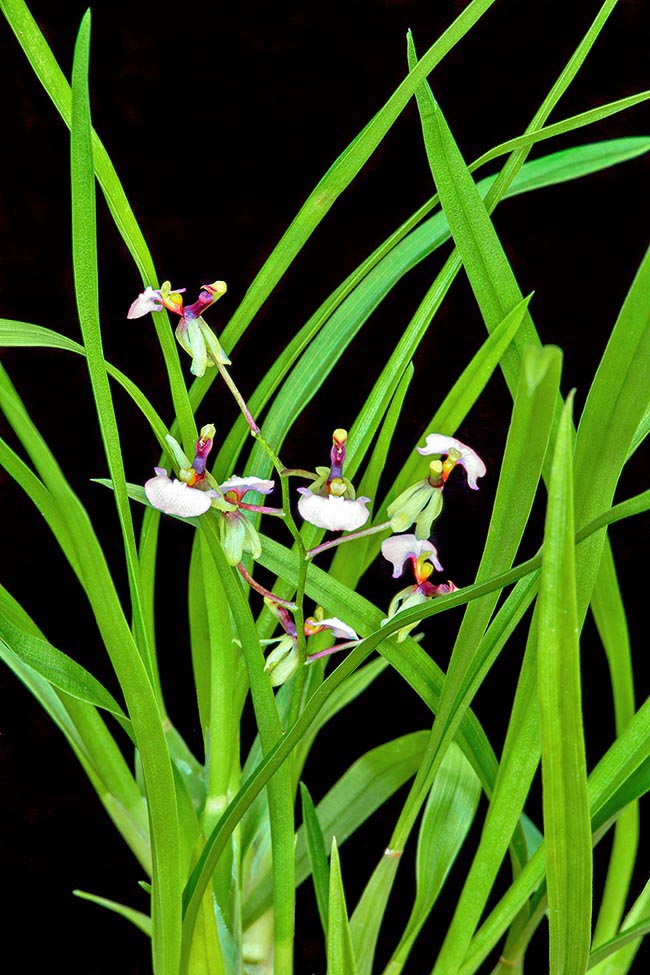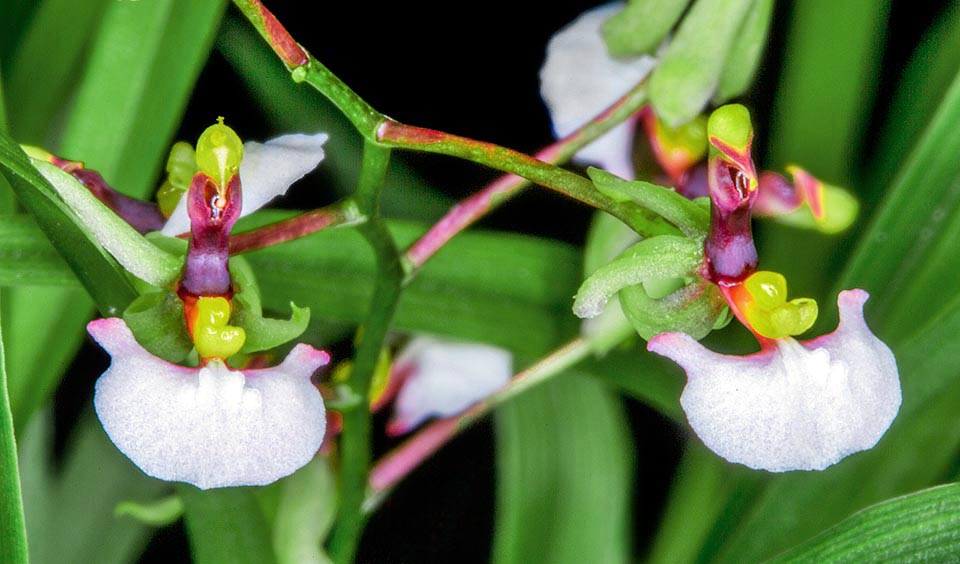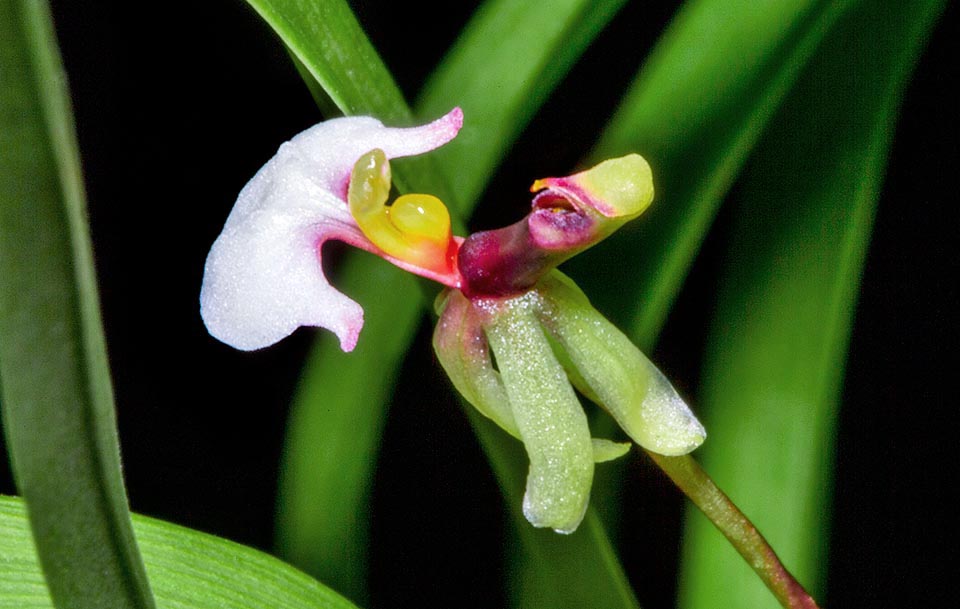Family : Orchidaceae

Text © Pietro Puccio

English translation by Mario Beltramini

Unusual Brazilian epiphyte, the Gomesa radicans has creeping rhizomes rooting at the nodes, 2-4 cm pseudobulbs and 10-18 cm linear leaves. Seen in profile, the purple violet column of the flowers reminds a bird © Giuseppe Mazza
The species is native to Brazil (Espirito Santo, Minas Gerais, Paraná, Rio de Janeiro, Rio Grande do Sul, Santa Catarina, São Paulo, and Trinidade) where it grows on the trees of the coastal humid forests between the 400 and 800 m of altitude.
The genus is dedicated to the Portuguese physician and botanist Bernardino António Gomes (1768-1823); the specific name is the present participle of the Latin verb “radico” = to take roots.
The Gomesa radicans (Rchb.f.) M.W.Chase & N.H.Williams (2009) is an epiphyte species with creeping rhizomes rooting at the nodes and pseudobulbs, spaced of 0,6-1,3 cm, oblong, compressed laterally, 2-4 cm long, subtended by 2-4 distichous foliar sheaths, with at the apex two linear leaves, thin, acute, 10-18 cm long and 0,2-0,4 cm broad.
Racemose inflorescences from the base of the ripe pseudobulbs, erect, 7-15 cm long, bearing up to 12 tiny flowers with sepals and petals, more or less retroflected, of greenish yellow or greenish white colour and white labellum, that emit a slight fragrance.
Oblong-spatulate dorsal sepal with acute apex, about 4 mm long and 1 mm broad, oblong lateral sepals with acute apex, about 5 mm long and 2 mm broad.
Oblong-spatulate petals with obtuse apex, about 5 mm long and 2 mm broad, membranaceous trilobate labellum with slightly wavy margins, about 4 mm long and 5 mm broad, with thin, acuminate, lateral lobes, and semi-circular median lobe, emarginate, with 2-6 callous, yellow at the base, crests.
Erect, thin column, of purple violet colour, about 3 mm long, that if viewed in profile reminds a bird.
It reproduces by seed, in vitro, but usually and easily by division with each section provided of at least 3-4 pseudobulbs.
Mini orchid of easy cultivation forming in short time dense tufts, requires a semi-shady position, intermediate temperatures, with lowest winter night ones not under the 14 °C, humidity of 70-80 % and continuous ventilation.
Ideal for terraria where is possible to adjust properly all environmental parametres.

It forms dense tufts with 7-15 racemose inflorescences that bear up to 12 tiny flowers having a light fragrance © Giuseppe Mazza
Usually it is mounted on pieces of bark or crafts of cork or of arborescent ferns covered by sphagnum, alternatively can be used low pots or baskets, even if suspended, with very draining and aerated compost that may be composed by medium sliced bark and charcoal with addition of sphagnum.
Regular and abundant watering during the growth of the pseudobulbs, even daily for the mounted plants, avoiding stagnations, spaced in winter until the vegetative regrowth, in way to give a short rest period, but without to make them wrinkle, utilizing rain water, by reverse osmosis or de-mineralized.

Greenish sepals and petals, more or less retroflexed. The white crescent-shaped labellum, with lateral acuminate lobes, has at the base 2-6 yellow callous crests © G. Mazza
Monthly fertilizations during the vegetative period with a product specific for orchids at ¼ of the dosage shown in the package.
The species is inscribed in the appendix II of the CITES (species whose trade is internationally ruled).
Synonyms: Sigmatostalix radicans Rchb.f. (1864); Ornithophora quadricolor Barb.Rodr. (1882); Ornithophora radicans (Rchb.f.) Garay & Pabst (1951); Ornithophora radicans f. alba Xim.Bols. (2016).
